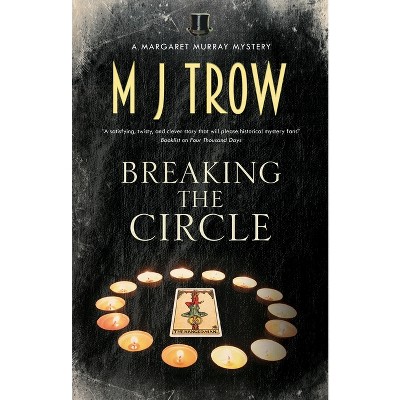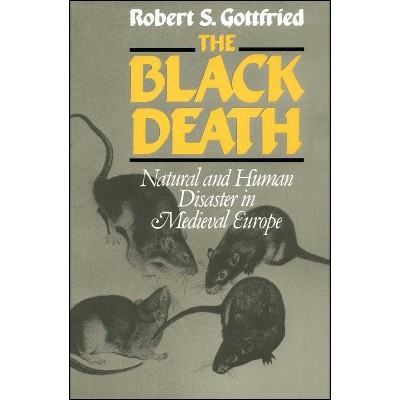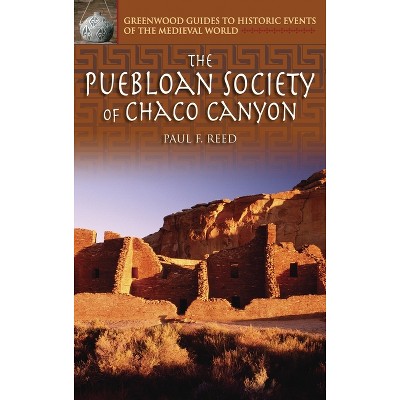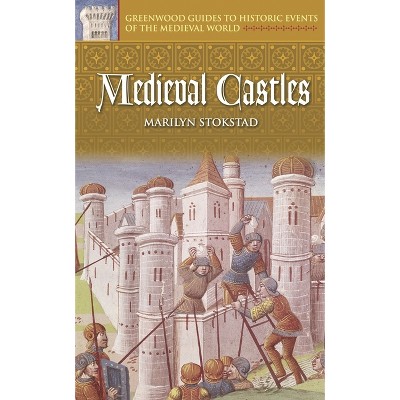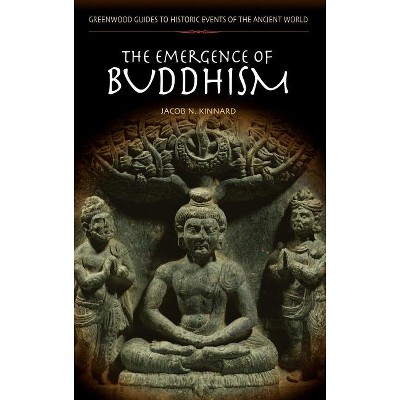Sponsored

The Black Death - (Greenwood Guides to Historic Events of the Medieval World) Annotated by Joseph P Byrne (Hardcover)
In Stock
Sponsored
About this item
Highlights
- Probably the greatest natural disaster to ever curse humanity, the Black Death's lethality is legendary, killing between a quarter to over half of any given stricken area's population.
- About the Author: JOSEPH P. BYRNE is a European historian and Associate Professor of Honors at Belmont University in Nashville, TN.
- 231 Pages
- History, Europe
- Series Name: Greenwood Guides to Historic Events of the Medieval World
Description
About the Book
Probably the greatest natural disaster to ever curse humanity, the Black Death's lethality is legendary, killing between a quarter to over half of any given stricken area's population. Though historians suspect a first wave of bubonic plague struck the Mediterranean area between 571 - 760 C.E., there is no doubt that the plague was carried west by the Mongol Golden Horde in the late 1340s as they raided as far west as Constantinople, where it is believed that Genoese traders became infected, and then carried, the disease into European and northern African ports after their escape. Within about two years practically the entire European continent and much of North Africa had been burned over by this disaster of apocalyptic proportions.
Eight thematic chapters guide the reader through the medical perspective of the plague-- medieval and modern--and to the plague's impact on society, cities, individuals, and art of the time. Medieval doctors named miasmatic vapors--bad air --as a primary cause of infection, along with an improper balance of the four Humors--blood, phlegm, black bile and yellow bile, often caused by ominous astrological alignments; or so they believed. Scapegoats, often Jews, were persecuted and murdered as frightened people desperately sought somebody to blame for the spread of the plague. Others assumed the plague was God's punishment of wicked humanity, and roamed the countryside in groups that would flagellate themselves publicly as an act of atonement. An annotated timeline guides the reader to the key events and dates of this recurring disaster. Nine illustrations show how artists represented the plague's impact on the self and society. Twelve primary documents, half of them never before translated into English, come from eyewitnesses ranging from Constantinople, Damascus, Prague, Italy, France, Germany, and England. A glossary is provided that enables readers to quickly look up unfamiliar medical and historical terms and concepts such as Bacillus, Verjuice, and Peasants' Revolt of 1381. An annotated bibliography follows, divided by topic. The work is fully indexed.
Book Synopsis
Probably the greatest natural disaster to ever curse humanity, the Black Death's lethality is legendary, killing between a quarter to over half of any given stricken area's population. Though historians suspect a first wave of bubonic plague struck the Mediterranean area between 571 - 760 C.E., there is no doubt that the plague was carried west by the Mongol Golden Horde in the late 1340s as they raided as far west as Constantinople, where it is believed that Genoese traders became infected, and then carried, the disease into European and northern African ports after their escape. Within about two years practically the entire European continent and much of North Africa had been burned over by this disaster of apocalyptic proportions.
Eight thematic chapters guide the reader through the medical perspective of the plague-- medieval and modern--and to the plague's impact on society, cities, individuals, and art of the time. Medieval doctors named miasmatic vapors--bad air --as a primary cause of infection, along with an improper balance of the four Humors--blood, phlegm, black bile and yellow bile, often caused by ominous astrological alignments; or so they believed. Scapegoats, often Jews, were persecuted and murdered as frightened people desperately sought somebody to blame for the spread of the plague. Others assumed the plague was God's punishment of wicked humanity, and roamed the countryside in groups that would flagellate themselves publicly as an act of atonement. An annotated timeline guides the reader to the key events and dates of this recurring disaster. Nine illustrations show how artists represented the plague's impact on the self and society. Twelve primary documents, half of them never before translated into English, come from eyewitnesses ranging from Constantinople, Damascus, Prague, Italy, France, Germany, and England. A glossary is provided that enables readers to quickly look up unfamiliar medical and historical terms and concepts such as Bacillus, Verjuice, and Peasants' Revolt of 1381. An annotated bibliography follows, divided by topic. The work is fully indexed.Review Quotes
"This is definitely more than a coffee-table-book, dealing with its topic considerably more in depth than it would be the case in a sensationalist book for the general reader....[a] readable introduction to the history of the Black Death."-Mediaevistik
?[N]ot only recommended for Medieval studies but for any comprehensive health history collection.?-MBR Internet Bookwatch
?[P]rovides a thorough study of the Black Death and its lasting effects....[t]his is a volume well worth its price for academic and high school libraries.?-Catholic Library World
?Recommended. Upper-division undergraduates and graduate students.?-Choice
?This book has been specifically designed for an undergraduate curriculum. The chapter topics appeal to contemporary tastes and interests and the additional material included makes it a good reference source for students. This book is highly recommended for libraries serving undergraduate students.?-E-Streams
?This detailed presentation describes the bubonic plague that destroyed large European populations in the 14th century. The Black Death continues to interest many, because it offers insights into survival and recovery from large-scale catastrophes. Byrne does not present the most gripping and horrific account, but he has compiled an outstanding reference discussing many theories about the possible causes, transmission, societal implications, economic consequences, and impact on modern medicine, along with 229 footnotes and a 127-item annotated bibliography....Byrne has provided a comprehensive history, especially for advanced students researching open-ended questions, such as "Would modern society survive a disaster similar in scale to the Black Death?"?-School Library Journal
?This is definitely more than a coffee-table-book, dealing with its topic considerably more in depth than it would be the case in a sensationalist book for the general reader....[a] readable introduction to the history of the Black Death.?-Mediaevistik
?This study looks at recent research and opinion and what it tells us about the response of humanity to great calamity. Primary-source documents that further illuminate the period are appended.?-Curriculum Connections/School Library Journal
"ÝN¨ot only recommended for Medieval studies but for any comprehensive health history collection."-MBR Internet Bookwatch
"ÝP¨rovides a thorough study of the Black Death and its lasting effects....Ýt¨his is a volume well worth its price for academic and high school libraries."-Catholic Library World
"[N]ot only recommended for Medieval studies but for any comprehensive health history collection."-MBR Internet Bookwatch
"[P]rovides a thorough study of the Black Death and its lasting effects....[t]his is a volume well worth its price for academic and high school libraries."-Catholic Library World
"Recommended. Upper-division undergraduates and graduate students."-Choice
"This book has been specifically designed for an undergraduate curriculum. The chapter topics appeal to contemporary tastes and interests and the additional material included makes it a good reference source for students. This book is highly recommended for libraries serving undergraduate students."-E-Streams
"This study looks at recent research and opinion and what it tells us about the response of humanity to great calamity. Primary-source documents that further illuminate the period are appended."-Curriculum Connections/School Library Journal
"This detailed presentation describes the bubonic plague that destroyed large European populations in the 14th century. The Black Death continues to interest many, because it offers insights into survival and recovery from large-scale catastrophes. Byrne does not present the most gripping and horrific account, but he has compiled an outstanding reference discussing many theories about the possible causes, transmission, societal implications, economic consequences, and impact on modern medicine, along with 229 footnotes and a 127-item annotated bibliography....Byrne has provided a comprehensive history, especially for advanced students researching open-ended questions, such as "Would modern society survive a disaster similar in scale to the Black Death?""-School Library Journal
About the Author
JOSEPH P. BYRNE is a European historian and Associate Professor of Honors at Belmont University in Nashville, TN. He has conducted research and published articles on a wide variety of subjects, from Roman catacombs to American urbanization, though his area of expertise is Italy in the era of the Black Death.